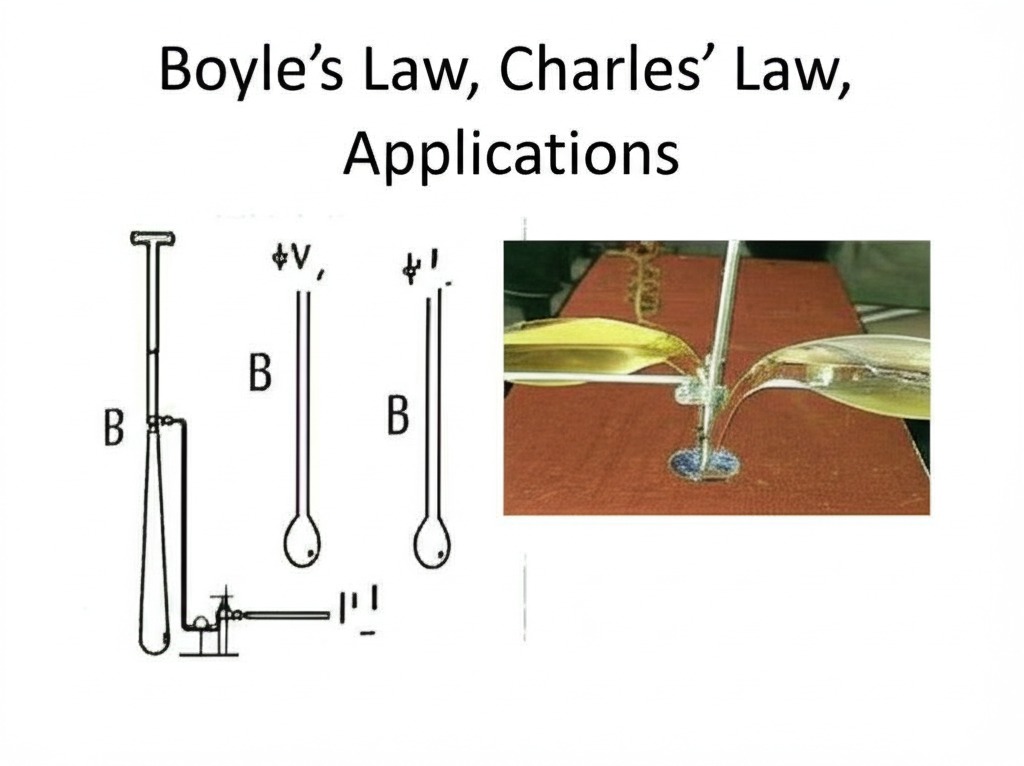Advanced Q&A on Gas Laws
Batch 5: Boyle’s Law – Numericals and Applications
Q1: A gas occupies ( 800 , text{cm}^3 ) under ( 760 , text{mm Hg} ) pressure. Find the pressure when the gas will occupy ( 380 , text{cm}^3 ), assuming temperature remains constant.
Using Boyle’s Law:
( P_1 V_1 = P_2 V_2 )
Substitute:
( 760 times 800 = P_2 times 380 )
( P_2 = frac{760 times 800}{380} = 1600 , text{mm Hg}. )
Answer: The required pressure is ( 1600 , text{mm Hg} ).
Q2: A gas occupies ( 600 , text{cm}^3 ) under a pressure of ( 700 , text{mm Hg} ). If the volume is reduced by ( 20% ), find the final pressure.
Initial volume: ( V_1 = 600 , text{cm}^3 )
Final volume: ( V_2 = 600 – 0.2 times 600 = 480 , text{cm}^3 ).
Using Boyle’s Law:
( 700 times 600 = P_2 times 480 )
( P_2 = frac{700 times 600}{480} = 875 , text{mm Hg}. )
Answer: The final pressure is ( 875 , text{mm Hg} ).
Q3: What is the significance of Boyle’s Law?
Answer: Boyle’s Law is significant because it explains:
- The behavior of gases during compression and expansion at constant temperature.
- Practical applications such as the working of syringes, lungs, and hydraulic systems.
Batch 6: Charles’ Law – Graphs and Applications
Q1: How can Charles’ Law be graphically verified?
Answer: Charles’ Law can be graphically verified using a plot of volume (( V )) vs absolute temperature (( T )), which results in a straight line passing through the origin.
Q2: A gas at ( 0^circ text{C} ) occupies ( 500 , text{cm}^3 ). At what temperature will it occupy ( 750 , text{cm}^3 ), pressure being constant?
Using Charles’ Law:
( frac{V_1}{T_1} = frac{V_2}{T_2} )
Given:
- ( V_1 = 500 , text{cm}^3, T_1 = 273 , text{K}, V_2 = 750 , text{cm}^3 )
( frac{500}{273} = frac{750}{T_2} )
( T_2 = frac{750 times 273}{500} = 409.5 , text{K} )
Convert to Celsius:
( t_2 = T_2 – 273 = 136.5^circ text{C} )
Answer: The gas will occupy ( 750 , text{cm}^3 ) at ( 136.5^circ text{C} ).
Q3: Explain the significance of Charles’ Law.
Answer: Charles’ Law explains the behavior of gases under changing temperatures, including:
- Hot air balloons rising due to expansion of heated air.
- Gas pressure regulators and temperature compensation in gas storage systems.
Batch 7: Combined Gas Law and Ideal Gas Equation
Q1: State the combined gas law.
Answer: The combined gas law relates pressure (( P )), volume (( V )), and temperature (( T )) of a gas:
( frac{P_1 V_1}{T_1} = frac{P_2 V_2}{T_2} )
This law applies when all three parameters change simultaneously for a fixed mass of gas.
Q2: What is the ideal gas equation?
Answer: The ideal gas equation combines Boyle’s, Charles’, and Avogadro’s Laws:
( PV = nRT )
where:
- ( P ) = pressure
- ( V ) = volume
- ( n ) = number of moles
- ( R ) = universal gas constant (( 8.314 , text{J/mol·K} ))
- ( T ) = absolute temperature
Q3: How does the combined gas law differ from the ideal gas equation?
Answer:
- The combined gas law is empirical, describing the relationship between ( P, V, ) and ( T ) for a fixed mass of gas.
- The ideal gas equation includes ( n ) (number of moles) and relates gas behavior to universal constants, making it applicable to chemical reactions and mole calculations.
Batch 8: Numericals on Combined Gas Law
Q1: A gas occupies ( 143 , text{cm}^3 ) at ( 27^circ text{C} ) and ( 700 , text{mm Hg} ). What will be its volume at ( 30^circ text{C} ) and ( 280 , text{mm Hg} )?
Using the combined gas law:
( frac{P_1 V_1}{T_1} = frac{P_2 V_2}{T_2} )
Substitute values:
- ( P_1 = 700 , text{mm Hg}, V_1 = 143 , text{cm}^3, T_1 = 27 + 273 = 300 , text{K} ),
- ( P_2 = 280 , text{mm Hg}, T_2 = 30 + 273 = 303 , text{K} )
( frac{700 cdot 143}{300} = frac{280 cdot V_2}{303} )
( V_2 = frac{700 cdot 143 cdot 303}{280 cdot 300} = 357.35 , text{cm}^3. )
Answer: The volume is 357.35 cm³.
Q2: A gas at STP occupies ( 500 , text{cm}^3 ). At what temperature will the volume reduce by ( 20% ), pressure being constant?
New volume: ( V_2 = 500 – 0.2 times 500 = 400 , text{cm}^3 ).
Using Charles’ Law:
( frac{V_1}{T_1} = frac{V_2}{T_2} )
Substitute values:
- ( V_1 = 500 , text{cm}^3, T_1 = 273 , text{K}, V_2 = 400 , text{cm}^3 )
( frac{500}{273} = frac{400}{T_2} )
( T_2 = frac{400 cdot 273}{500} = 218.4 , text{K}. )
Answer: The temperature is 218.4 K.



